Haiti Cholera Response: Stories from the Field, Part 2
Posted on by

When I was in high school I studied French and learned about French-speaking countries. Haiti was one of them, and I always thought that one day I would visit this beautiful country as a vacation destination. I never, ever thought I would be part of a response like the one currently underway in Haiti or that I would see the country in such desperate despair.
But fate would have it differently. [View our Photo Gallery]
New Challenge, Different Role
As a Career Epidemiology Field Officer (CEFO) in Texas, I assist the state in planning and preparing for disasters as part of my job duties. When I was asked by CDC to deploy to Haiti as part of the Haiti Response effort, I was excited to use my insights from a State Health Department and apply my skills on an international level. 
I was deployed to Haiti for 30 days in November, 2010. Originally, my role was supposed to be response coordinator for the earthquake that struck Haiti a year ago near the capital Port-au-Prince. I was nervous about the deployment, because I didn’t know what I would feel and what I would do if I went to the place where Hotel Montana used to be. That is where the CDC family lost one of its own in the quake, my friend Diane Caves.
Soon before my departure, Haiti began seeing cases of cholera. My role then quickly changed, and I became the lead for the Cholera Assessments and Training Team. It’s funny how strong we really are. I saw what needed to be done and went right to work. But, of course, we never forget what happened—no matter how much time passes by.
The team was responsible for training a tier of doctors and nurses as master trainers. These doctors and nurses were to train other providers from around the Caribbean nation who would in turn train community healthcare workers in the field.
I quickly learned that flexibility would be crucial in supporting the mission in Haiti, especially because I would be working on cholera surveillance near the end of my deployment. And this was in addition to the training. Assessment was one thing, and training was another; most of my efforts went into training.
Strength through Tough Times

Close to the end of my third week of deployment, I started doing surveillance. During a meeting at the National Lab, Dr. Roodly Archer, who was the CDC team lead for the Haiti cholera response, told me my presence had been requested at the Presidential Palace (National Palace). Due to the upcoming elections, many of the Haitian government employees were meeting at the palace. We went there to meet the director of the lab and were struck by how this once lovely palace, before the January quake, was now no longer livable.
CDC’s Haiti office is located inside the U.S. Embassy. Seeing all the tragedy strewn about Haiti was emotionally tough at times for me to bear. So tough to the point I no longer wanted to go outside the embassy because it was hard seeing the people of Haiti and all they had lost. There is still much devastation from the earthquake. Rubble in the streets, collapsed buildings that are unsafe to live in, and tents clustered like little villages are all about.
Despite the damage and the rising cases of cholera, I gained my strength from the Haitian people we worked with. They were truly amazing! They always had smiles on their faces and never complained when the team had to work late in order to meet a deadline. You couldn’t tell who had lost a home or a loved one in the quake or whether their lives were affected by this cholera outbreak. They were happy to help us even as they were going through their own public and private pain.
I wish we could all adopt that attitude. When we really look at what other people are going through in other countries, it makes our problems look really small.
A Time to Give Thanks
As Thanksgiving Day approached, we were sure we would be eating MREs (Meal, Ready-to-Eat) for dinner, but Jose Laguana, who provided logistics support for the CDC deployed staff, would have none of that. On the night before Thanksgiving, he came up with the idea to search for a car so we could go out and look for a turkey. We eventually found a turkey. For the steep price of $80! Not surprising given the state of Haiti’s economy. We all chipped in to buy trimmings for a full Thanksgiving meal.

One of the ladies who worked in the embassy cafeteria cooked the turkey for us with all the right trimmings. CDC staff sat down for a traditional Thanksgiving meal thankful for the opportunity to be part of CDC’s response efforts there.
Before the Thanksgiving holiday, we were working nonstop 12 to 16 hours a day for the whole time we were there, so we were thankful for this small break.
Challenges to Overcome
Despite the many challenges, we completed our mission and trained more than 500 doctors and nurses in the proper clinical management of cholera. Some of our challenges included the threat of Hurricane Tomas. The team was evacuated to a safe house for a couple of days in case Tomas would have a great impact on Haiti. Luckily, Port-au-Prince experienced only rain, but other parts of Haiti experienced road closings due to flooding, and this affected our assessment team’s ability to visit sites in the north.
Other challenges included the upcoming presidential election, civil unrest, and language and cultural differences. But our greatest challenge was time (or lack of it).
Back to Normal
 My experience in Haiti was both exciting and challenging. We worked tirelessly to ensure doctors and nurses would have the most up-to-date material and instruction led by cholera experts in the field. I am happy to have been part of it.
My experience in Haiti was both exciting and challenging. We worked tirelessly to ensure doctors and nurses would have the most up-to-date material and instruction led by cholera experts in the field. I am happy to have been part of it.
This year was filled with a lot of exciting projects within the state of Texas. I also responded to the national crisis involving the Gulf oil spill and later the international crisis in Haiti involving the cholera outbreak. After these public health adventures, I got some much needed rest, and now I’m back in the office and back to my “daily routine.” I’m happy to be back and am happy to answer any comments or questions you may have. Feel free to post on this blog.
More on Haiti
Visit Haiti Cholera Response: Stories from the Field, Part I to read about CDC Public Health Prevention Service (PHPS) fellow Emily McCormick’s recent Haiti deployment experience. You’ll also find more photos of CDC at work in Haiti!
Learn more about the current outbreak at the CDC Cholera in Haiti Web site.
Find Cholera Information for Healthcare Providers Going to Haiti.
Photo Gallery
16 comments on “Haiti Cholera Response: Stories from the Field, Part 2”
Comments listed below are posted by individuals not associated with CDC, unless otherwise stated. These comments do not represent the official views of CDC, and CDC does not guarantee that any information posted by individuals on this site is correct, and disclaims any liability for any loss or damage resulting from reliance on any such information. Read more about our comment policy ».
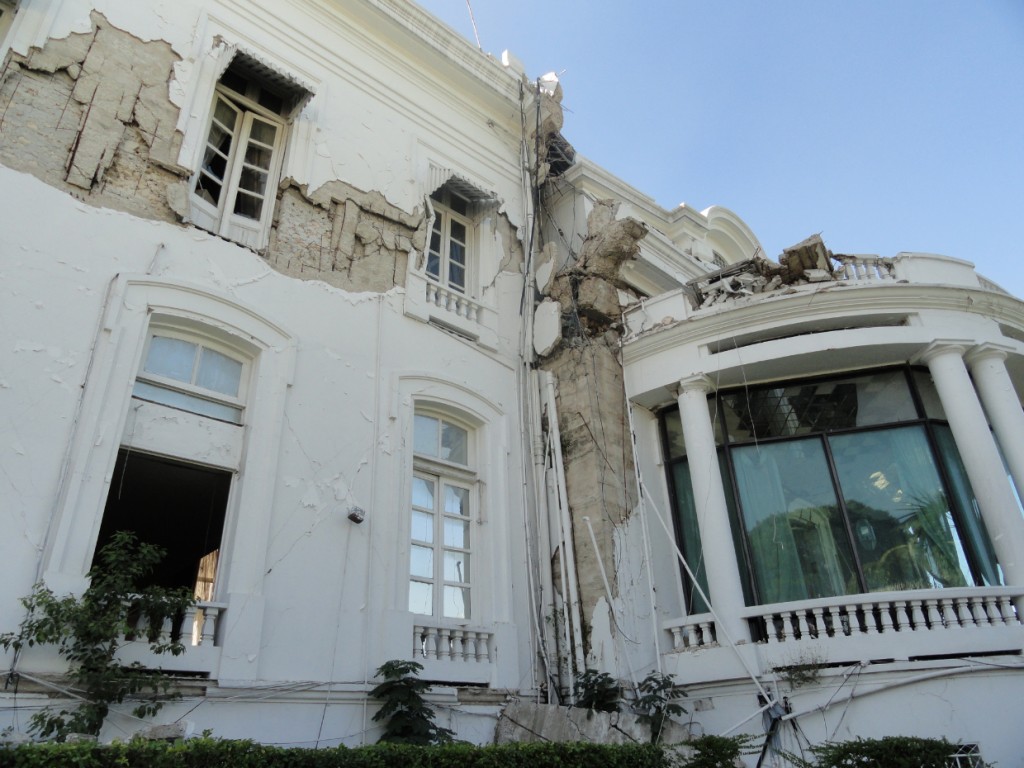
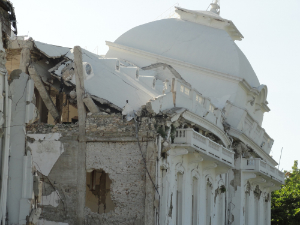
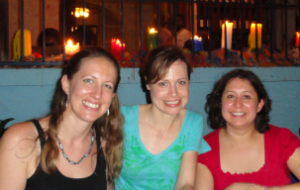

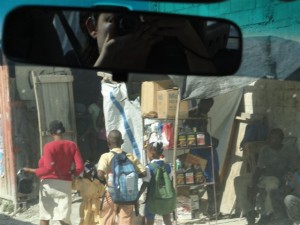
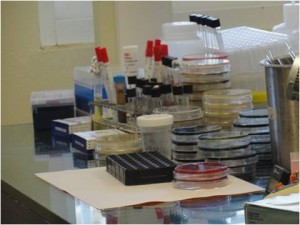


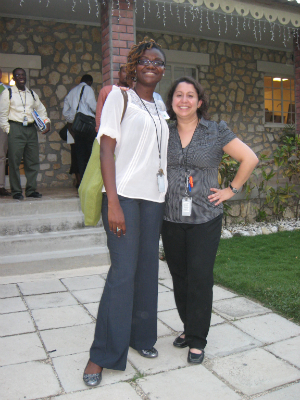
I am so proud of my daughter! with a name like Paris I knew she needed to study French and she did in high school and in college she studied at the Sorbone in France and now her French clases came to fruition whe she was needed in Haiti.
It is so wonderful to read of the many, many good things our country does. Our citizens can be proud of the wonderful dedicated people who work with the CDC and those who respond to the calls. It is such a small world.
From the crowd at the table, that must have been one darn big turkey – are you certain it was a turkey???
I am so proud of our CEFO! She has been a valuable asset to Texas! We are truly lucky to have her. assigned to us.
One of my fathers caregivers is going to Haiti and we are concerned about the possiblity of Cholera coming home with her undetected. We wish to protect my 96 year old father and our household well-we are on a septic system. Since Cholera is often asymtomatic is there a test that can be done when she returns to make certain the cholera organism has not attached itself to our caregiver and friend?
Thanks to the author to share the experience in Haiti. Every year we prepare the cholera emergency in our city level, and train our clinics how to handle the suspected patients. We also do lab monitoring year round. All we do seems to the government as meaningless,for we could not find any clinical diagnosed patient or even one positive specimen. But this blog gives me confidence in my center. And the above all the feelings,the warring, the agony, the expectition and the sorry feelings when the author involving the seting, are as what we would touch in the field. We are right: make prepareness in daily routins, and make prompt action in emergence.
Thank you a lot.
Ethang Chuang
Lois,
You have raised some important questions. While it is true that a cholera infection can be mild or without symptoms, it is important to understand how a person becomes infected and what can be done to prevent it. A person can get cholera by drinking water or eating food contaminated with the cholera bacterium. In an epidemic, the source of the contamination is usually the feces of an infected person that contaminates the food and/or water. The disease can rapidly spread in areas with inadequate treatment of sewage and drinking water, such as Haiti. Person-to-person transmission is extremely rare, even to healthcare workers during epidemics. Drinking water and food contaminated with Vibrio cholerae from the feces of an infected person is the most common source of cholera infections. You can learn more about the cholera outbreak here: http://www.cdc.gov/haiticholera/
Take care!
Araceli
Mrs. Ponder,
It was my pleasure to have been deployed with your daughter. She is a hard worker, and her positive attitude is beyond words. She played an important role on our team and we were happy to have her.
Araceli
Speaking from 24 years of military public health and disaster zone operational experience, the preparation and plannining Araceli engages in daily is the linch pin to operational success in a disaster zone. As Chuang comments, official and decsion makers are oftern indifferent public health until crises occurs. This is where the training, preparation, and consultation experience can make or break a public health professiona. In Araceli case, she met the challenge like a true professional.
Respect
Milton
Our wonderful public health princess…spreading smiles and making rainbows, one outbreak at a time.
As a result of you – this is very constructive !
I fully agree completely..
Up until now, all I have read on this article is extremely boring, and seems to be written by writers that lack education. You’ve done a very good job conveying your passion with accurate information.
There are some interesting points in time in this article but I don’t know if I see all of them center to heart. There is some validity but I will take hold opinion until I look into it further. Good article , thanks and we want more! Added blogs.cdc.gov to FeedBurner as well
I just could not leave your site before suggesting that I actually loved the standard info an individual supply in your guests? Is going to be back continuously to check up on new posts